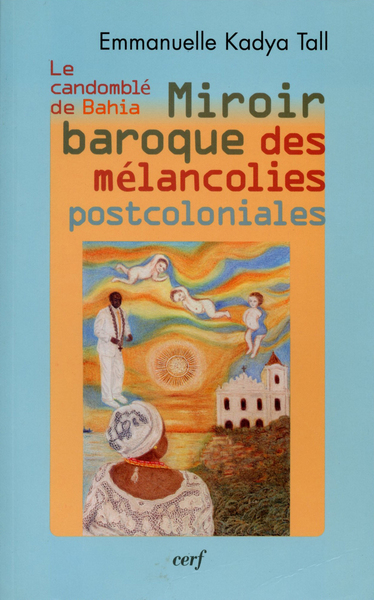- EAN13
- 9782204096652
- Éditeur
- Cerf
- Date de publication
- 23 février 2012
- Collection
- SCIENCES HUMAIN
- Dimensions
- 21,5 x 13,5 x 1,3 cm
- Poids
- 232 g
- Langue
- fre
Miroir Baroque Des Mélancolies Postcoloniales, Miroir Baroque Des Mélancolies Postcoloniales
Emmanuelle Kadya Tall
Cerf
Prix public : 23,00 €
Comment comprendre la célébration conjointe de Jésus-Christ et du fondateur présumé d'un ancien royaume africain ? Dans une même séquence, un prêtre catholique célèbre le rite eucharistique et un chef de culte préside à l'immolation d'un taureau dont la tête et les entrailles sont transformées en objets divins. Pour revisiter le candomblé de Bahia, un culte de possession brésilien rendu célèbre par les travaux de Roger Bastide et de Pierre Verger, il s'agit aujourd'hui de substituer aux analyses, en termes de syncrétisme ou de métissage, une anthropologie religieuse, historique et pragmatique, d'un espace-temps, l'Atlantique Sud. La traite esclavagiste s'y est développée dans le cadre idéologique de la Contre-Réforme qui a renouvelé, tant pour les négriers africains et les colons européens que pour les esclaves africains et les autochtones amérindiens, le rapport au sacré, produisant ainsi des configurations baroques de croyances. -- How should we comprehend the joint celebration of Jesus-Christ and that of the supposed founder of a former African kingdom? In succession, a Catholic priest celebrates the rite of the Eucharist and the leader of a cult presides over the immolation of a bull whose head and entrails are transformed into divine objects. To revisit the Candomblé of Bahia, a Brazilian cult of possession made famous by the works of Roger Bastide and Pierre Verger, we must resituate analyses made in terms of syncretism or mixed races by a religious, historical and pragmatic anthropology, a space/time concept, the South Atlantic. The slave trade developed there in the ideological context of the Counter-Reform which renovated, as much for the African slave traders and the European colons as for the African slaves and the Amerindians, the relation with the sacred, so producing some Baroque configurations of belief.


















